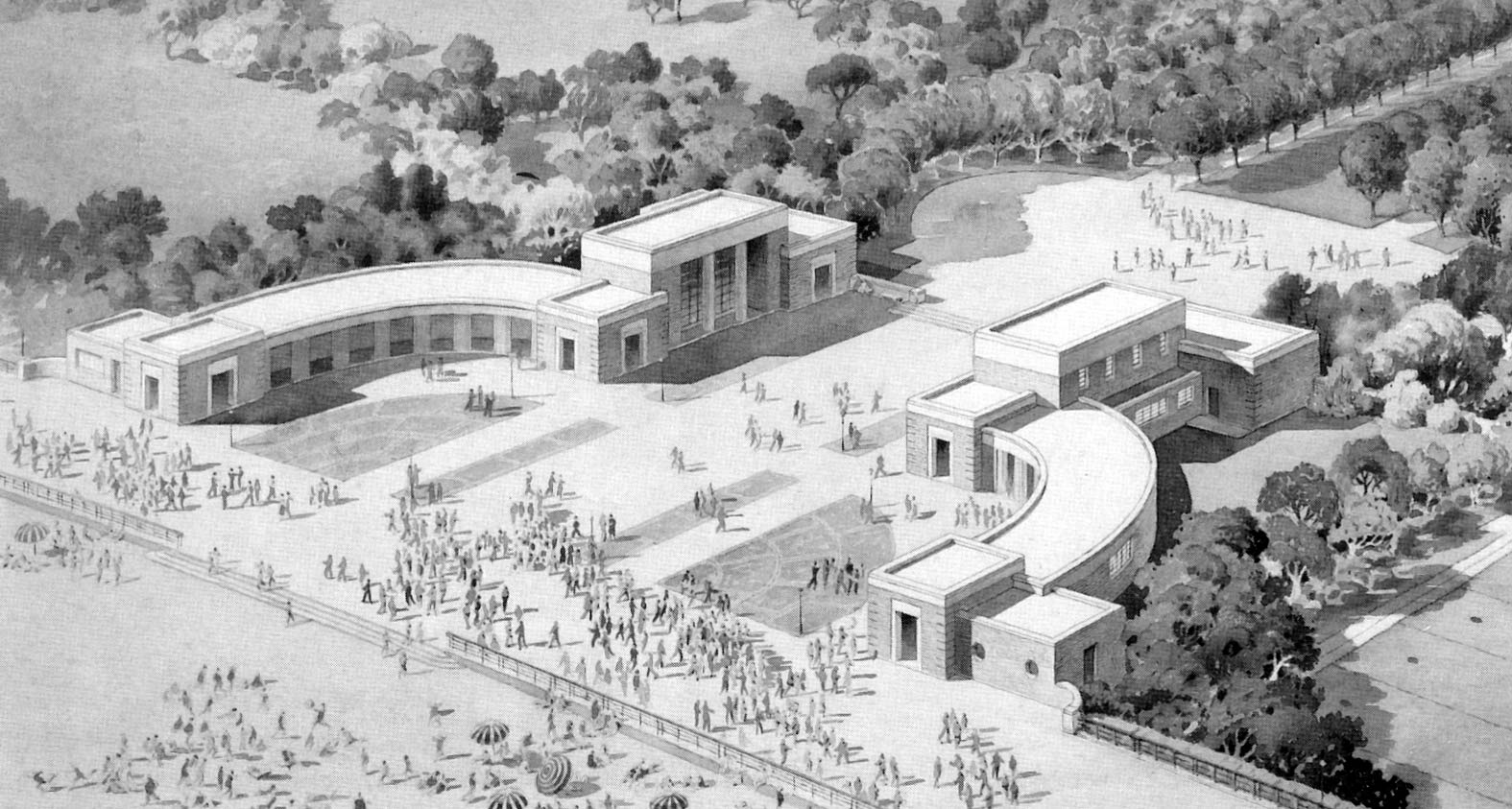
Photo: [1,p.170]
Jacob Riis Park Central Mall building, 1936 drawing. As you can see, it's like the Orchard Beach
pavilion but on a smaller scale. Jacob Riis Park is on the Rockaway
Peninsula of Queens, across Jamaica Bay from Brooklyn, connected by the new
Marine Parkway Bridge (also designed
by Embury). Jacob Riis Park was already a beach with a bathhouse by 1934,
when the NYC Parks department began its New Deal construction projects, at
which time resolved to fully develop the entire tract for bathing and beach
recreation[3,p.81].
Plans for the redesign and enlargment of the bath house and recreational
facilities at the park were developed from the summer of 1936 to the spring
of 1937 by Clinton Lloyd, chief of architectural design, and Aymar
Embury II, architectural consultant.[3,p.93]
The previously existing bathhouse was largely
demolished and the remainder significantly enlarged and
remodeled[3.pp.94-95] and a new bathhouse called the Central Mall Building
was added (shown above, conceived by Embury[1,p.168]), along with a
boardwalk, first-aid stations, a maintenance shop and garage, refereshment
stands, boiler room, electrical hut, a new parking area ("the largest single
paved parking space in the United States"[1,p.170]), a surf shop, concessions, floodlights, and so on,
plus numerous athletic fields and game courts as well as a small golf
course. All WPA-built[4].
References:
- Ballon, Hilary, and Kenneth T. Jackson (editors), Robert Moses and the Modern City: The Transformation of New York, W.W. Norton & Co., New York (2007), pp.168-170.
- Jacob Riis Park, The Cultural Landscape Foundation: "The park was redesigned between 1934 and 1937 under Parks Commissioner Robert Moses. Landscape architect Gilmore Clarke of Clarke & Rapuano, New York City Department of Parks Chief of Architectural Design Clinton Loyd, and architect Aymar Embury II collaborated on the final 1936 plan, which remains largely intact."
- Harlan D. Unrau, Historic Structure Report: Jacob Riis Park Historic District, Historical Data, Gateway National Recreation Area, New Jersey - New York, Package No.109 , National Parks Service, 1 May 1979.
- Jacob Riis Park Historic District, National Register of Historic Places, National Park Service, 17 June 1981: "the historical significance of the [Jacob Riis Park] District derives from the implementation and construction of the park during the 1930's. Labor costs were funded through the Works Progress Administration. WPA projects in New York, including the nation's largest project, LaGuardia Airport, provided temporary relief for the city's unemployed."